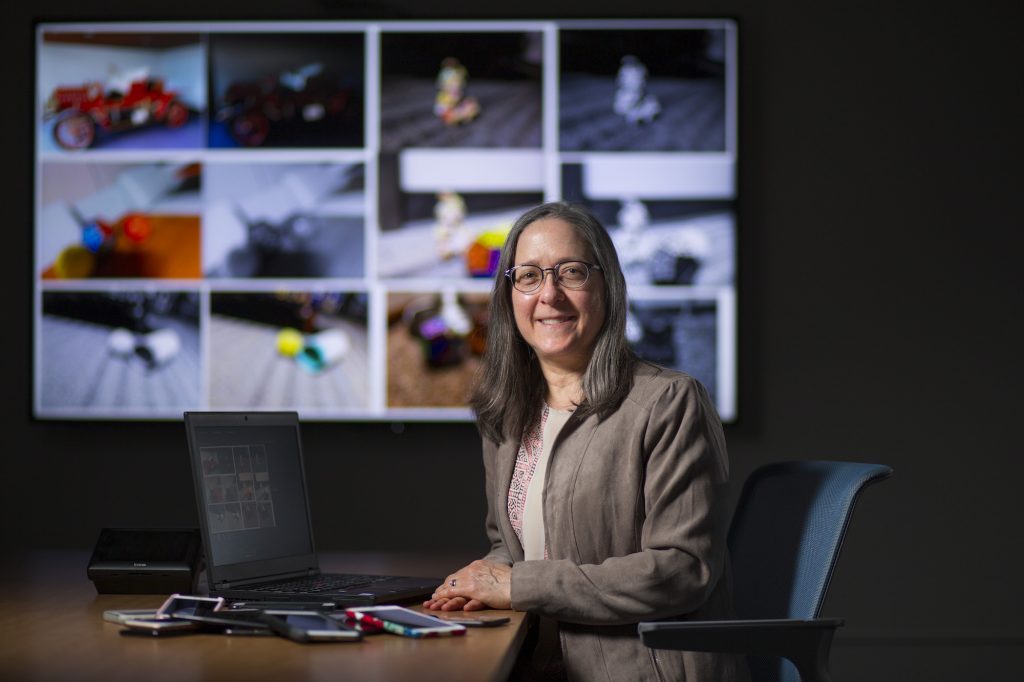Exploring how mathematics, statistics and digital evidence analysis intersect is Jennifer Newman’s specialty. The CSAFE researcher and associate professor of mathematics at Iowa State University investigates solutions to image processing problems, most recently in the area of forensic steganalysis- or the detection of hidden messages inside a photo.
How does a mathematician get involved in digital forensics? Newman shares an inside look at what sparked her interest in steganography, why she loves being a part of the CSAFE team and what’s next for her research in a recent interview.
Q: Why are you interested in studying steganography?
A: In the late 1990s, an MS student in Computer Engineering wanted to do a thesis on this topic. That drew me to learn more about this interesting field, which draws on topics not only in math but in physics, signal processing, computer science and statistics. Detecting the presence of very-low-magnitude “noise” such as a stego signal is a challenge.
Q: What has been challenging about studying this field?
A: The field uses several different application techniques from signal processing and computer science, which were new to me. As I study how the detection methods are created, I am trying to find ways to bring a statistical foundation to concepts that are not usually broached in steganalysis, such as the differences between sample spaces (databases) used for academic steganalysis and those encountered by practitioners.
Q: What kinds of tools is your research team developing to solve current problems in steganography?
A: We are currently looking at score-based likelihood ratios to improve the discussion around identifying a camera device from an image taken with that device. Currently, such an extension that involves the full statistical methodology of score-based techniques has not been applied to this area of camera forensics. Another tool we are investigating is a model to help identify the difference in exposure settings, primarily ISO and exposure time setting, between our camera app Cameraw and the native cameras on mobile phones. This may help improve the steganalysis of unknown images if factors from the exposure settings can be deduced from an image.
Q: What do you enjoy most about being part of the CSAFE team?
A: I have enjoyed my time with CSAFE as a researcher and also as a member of a vibrant research team, both with my group and with the other CSAFE members. All of them are working to bring more practical solutions to areas in forensics lacking statistical foundations. I find it exciting to have the opportunity to produce cutting-edge forensic research in digital image forensics by laying some necessary statistical foundations, including a novel mobile phone reference dataset.
Q: What’s next for steganography research at CSAFE?
A: The next generation of algorithms for detecting hidden images will rely on deep learning algorithms with millions of free parameters. Our existing database is not large enough to allow investigators to work with deep learning methods. We plan to grow the database substantially through automation of the image data collection and stego creation process, such as using a drone to collect copious amounts of image data.
Newman’s steganography apps forensics image database, StegoAppDB, is a database of image data from mobile phones. StegoAppDB contains over 960,000 innocent and stego images using ten different phone models from 24 distinct devices, with detailed provenanced data such as a wide range of ISO and exposure settings, EXIF data, stego app, message information, embedding rate, and other information. It is the first database consisting of mobile phone photographs and stego images produced from mobile stego apps, including a rich set of side information.
Are you interested in learning more about the database or implementing the data into your work? It’s publically available on the CSAFE Data Portal.
Read more about Newman’s work form stories around the web in ISU news and the Ames Tribune.




